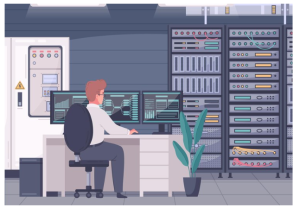
If you are doing your marketing well, you will be very familiar with getting into the data provided by your web analytics package. One of the key metrics of whether your website is working is bounce rate.
Bounce rate is defined as the percentage of single-page visits, i.e. the visitor exits the website without seeing more pages than their entrance page. With that definition, it is pretty clear that the lower your bounce rate, the better your website is performing.
That is true in most situations, but not all. You need to put your bounce rate into context. Imagine that you own a restaurant. Your home page has a high bounce rate, so is this a problem? If your home page has your phone number on it, it may be that people are visiting your site, calling the number and leaving the site. Your objective (a full restaurant!) is being met even with a high bounce rate.
But this is an exception – a high bounce rate tends to signal an opportunity to improve. Here are four ways that you could lower your bounce rate:
Attract The Right Audience:
As with virtually every metric within web analytics, you need to understand the context. Regardless of how fantastic your website user experience, content and offering is, if the audience that you are attracting is irrelevant, the website will deliver a high bounce rate. It is not easy to attract the right people to your website (paid social media can really help here!), but if you are able to, that alone will lower your bounce rate.
Make Your Content Easily Digestible:
Unfortunately it doesn’t take much searching to find a web page that is absolutely chocked full of text which is really overwhelming to look at. The content itself might be fascinating, but it just looks awful! Keeping only the essential text as well as using bullet points can help to break up large passages of dense text. And don’t forget using images, video, sound, etc. can also make your content less daunting.
Have A Clear User Journey:
Your navigation should be there to enable the user to achieve the mission that they are undertaking, whether that is as lofty as making a purchase or as trivial as someone just killing a bit of time. Whether you are using a floating main menu or navigation aids in the right / left hand columns, being able to offer the user somewhere interesting to go next is really important – and will lower your bounce rate. Amazon’s ‘customers who bought this item also bought’ boosts basket spend as well as keeping the user on the site.
Don’t Get In The Way:
One of the best pieces of advice that I have been given is not to get in the way of the user. Pop-ups are all well and good for building email subscriber lists, but they can interrupt the user journey. If distractions are not kept to a minimum, you run the risk of losing the user.
Digital & Social Articles on Business 2 Community(69)







